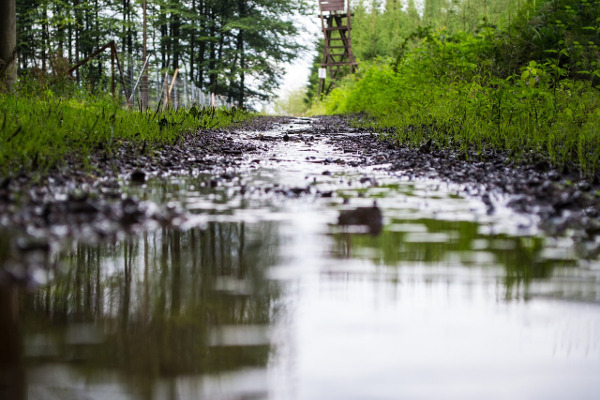The weather plays a significant role in mushroom hunting, acting as a guide in the forest. Imagine being surrounded by the earthy scent of damp soil, with hidden treasures awaiting discovery under the canopy.
The best weather conditions for a successful mushroom foray involve optimal temperature, moisture levels, and other key factors that can determine the outcome of your expedition.
Importance of Weather Conditions
Understanding the importance of weather conditions is vital for successful mushroom hunting.
Weather plays an important role in the growth and development of mushrooms. Keeping an eye on the weather forecast is essential when going on a mushroom hunting expedition. Rainfall is a key factor to consider, as mushrooms thrive in damp conditions. After a good rainfall, you’re more likely to have a successful hunt. However, be cautious of heavy rain, as it can make the ground too soggy, making it difficult to find mushrooms.

Appropriate attire, such as sturdy boots and waterproof clothing, is recommended to ensure comfort and protection while navigating through potentially wet and muddy terrain during mushroom hunting.
Temperature fluctuations can also impact mushroom growth. Sudden extreme cold or heat can disrupt the natural growth cycle of mushrooms. Ideally, stable temperatures conducive to mushroom growth are preferable.
Additionally, wind can dry out mushrooms or make them harder to spot.
Optimal Temperature Range
To enhance your mushroom hunting success, consider the optimal temperature range that promotes mushroom growth. For best results:
- 60-70°F (15-21°C): Ideal for many mushroom species like morels and oyster mushrooms, thriving in mild temperatures for easier spotting.
- Avoid Extreme Temperatures: Mushrooms struggle above 80°F or below 40°F, so aim for moderate weather conditions.
- Nighttime Temperatures: Cold nights can slow growth, even if daytime temperatures are suitable.
- Consistency Matters: Maintain stable weather conditions as fluctuating temperatures can disrupt mushroom growth cycles.
Impact of Moisture Levels
Maintaining proper moisture levels is vital for optimal mushroom growth during your hunting trips. Mushrooms need the right amount of moisture to thrive. Here’s a table illustrating how moisture levels affect mushroom growth:
| Moisture Level | Influence on Mushrooms |
|---|---|
| Low | Stunts growth, dry mushrooms |
| Moderate | Promotes healthy growth |
| High | Increases size, but can attract pests |
Effect of Sunlight Exposure
Proper sunlight exposure is vital for the health and growth of mushrooms during hunting expeditions. Here are some key points to keep in mind:
- Balanced Exposure: Mushrooms need a delicate balance of sunlight. Too much can dry them out, while too little can hinder growth.
- Morning Sunlight: Early morning sunlight is ideal as it provides gentle warmth without the intensity of midday sun.
- Dappled Shade: Look for areas with dappled sunlight or partial shade to mimic natural mushroom habitats.
- Avoid Harsh Sun: Stay away from areas with harsh, direct sunlight for extended periods to prevent damage to delicate mushrooms.
Role of Wind in Mushroom Hunting
When mushroom hunting, take note of the wind direction as it influences spore dispersion. This can guide you to potential mushroom-rich areas.
Additionally, wind can carry scents, helping you detect mushrooms from a distance.
Wind Direction Impact
Pay attention to how wind direction influences mushroom distribution while hunting.
Wind spreads spores to new locations, affects moisture levels in habitats, and carries scents that can guide you to areas with many mushrooms.
Observe wind patterns to strategize your search effectively.
Spore Dispersal Techniques
In the realm of mushroom hunting, understanding spore dispersal techniques is vital. Mushrooms disperse spores using the wind. When mature, mushrooms release spores into the air for wind dispersal.
To enhance your mushroom hunting success, consider the wind direction. Position yourself upwind from spore release areas to let the wind carry spores towards you. By utilizing wind for spore dispersal, you can increase your chances of finding a plentiful mushroom harvest.
Airborne Scent Detection
Utilize wind direction to enhance your ability to detect airborne scents while mushroom hunting. Position yourself downwind from areas with a high likelihood of mushroom growth to catch their scent as it drifts towards you. Stay alert to changes in wind direction that can lead you to different mushroom patches.
Seek sheltered spots like rock formations or dense vegetation to detect subtle scents. Train your senses to pick up faint aromas carried by the wind, guiding you towards potential mushroom hotspots.
Weather Patterns to Avoid
Avoid mushroom hunting in rainy conditions as it can impact mushroom availability and quality.
Optimal temperature is vital, so avoid extreme heat or cold.
Additionally, be wary of windy weather as it can disrupt spore dispersal and make it harder to find mushrooms.
Rainy Conditions Impact
Rainy conditions can significantly impact mushroom hunting outings. Here’s how they can affect your foraging adventure:
- Mushrooms Absorb Water: Heavy rain saturates the ground, causing mushrooms to absorb excess water, affecting texture and taste.
- Difficult Terrain: Slippery, muddy ground makes navigating forests or fields challenging.
- Decreased Visibility: Rain reduces visibility, making it harder to spot mushrooms hidden among foliage.
- Spoilage: Excessive rain can lead to mold growth, rendering some mushrooms inedible.
Seasonal Considerations
Keep an eye on the weather forecast before heading out for mushroom hunting to ensure optimal conditions. Different types of mushrooms thrive in specific seasons, boosting your chances of a successful foraging trip.
Spring is a prime time for morel mushrooms, while summer brings chanterelles and porcini. Fall offers various mushrooms like chanterelles and matsutake due to cooler temperatures and dampness.
Understanding seasonal patterns can help you plan your foraging expeditions effectively for a fruitful harvest.



